This post may contain affiliate links. Please read my privacy policy.
Nyonya Stewed Pork Ribs is a very delicious dish, one that would certainly stimulate your appetite with its tangy and savory taste.
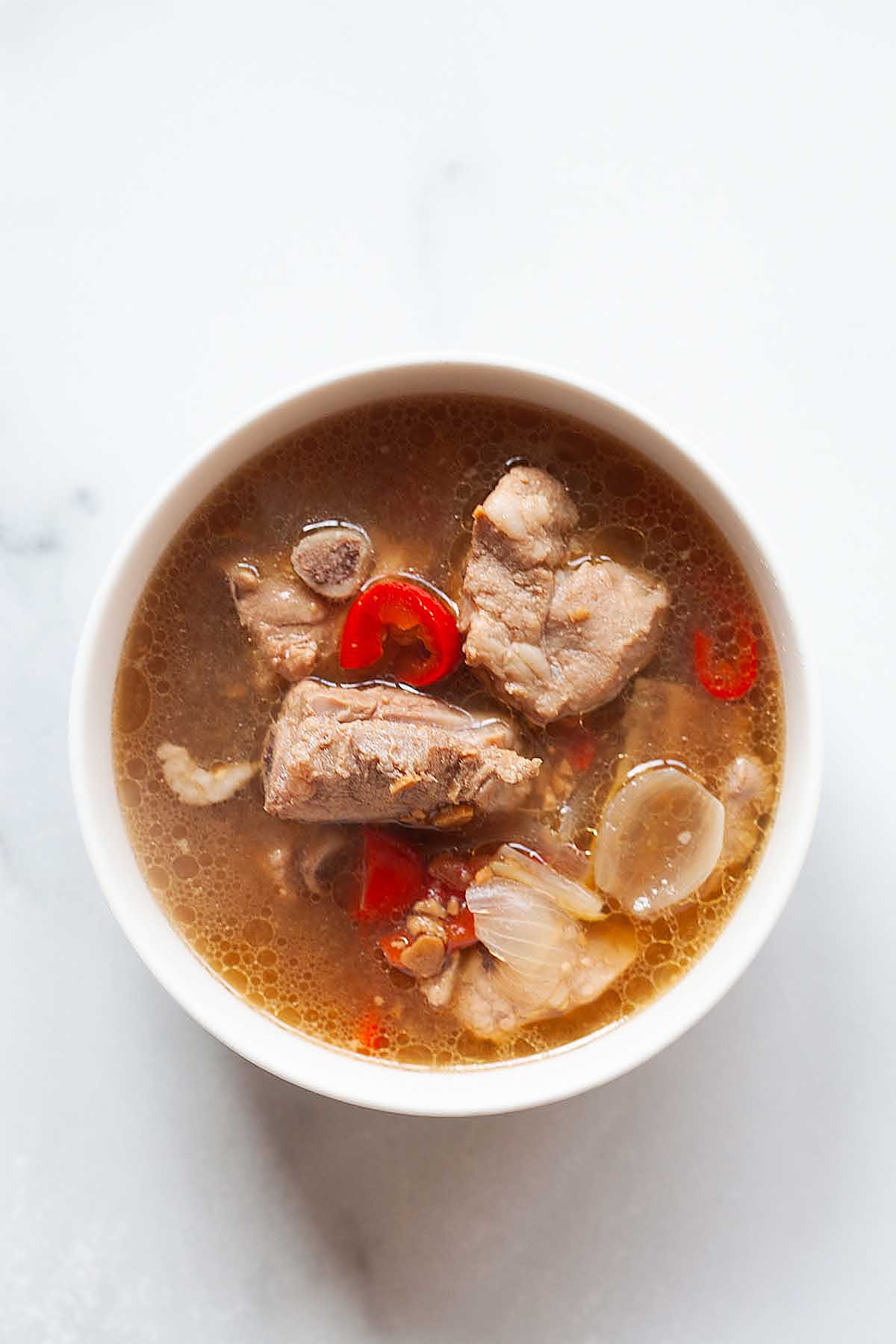
Stewed pork ribs with taucheo (fermented bean paste) was one of my mother’s recipes, one that I am fortunate to learn. It brought back a lot of sweet memories as I was preparing it today.
It was my father’s favorite dish–one that garnered special attention as my mother would spend hours slowly stewing the pork ribs until the meat falls off the bones. As humble as it looks, Nyonya stewed pork ribs is a very delicious dish, one that would certainly stimulate your appetite with its tangy and savory taste.
I made this very dish for my parents once. My mother instructed me in the kitchen and taught me the step-by-step, and my father gave me his thumbs up when I served it to him. He told me it was “ho chiak” (delicious)…
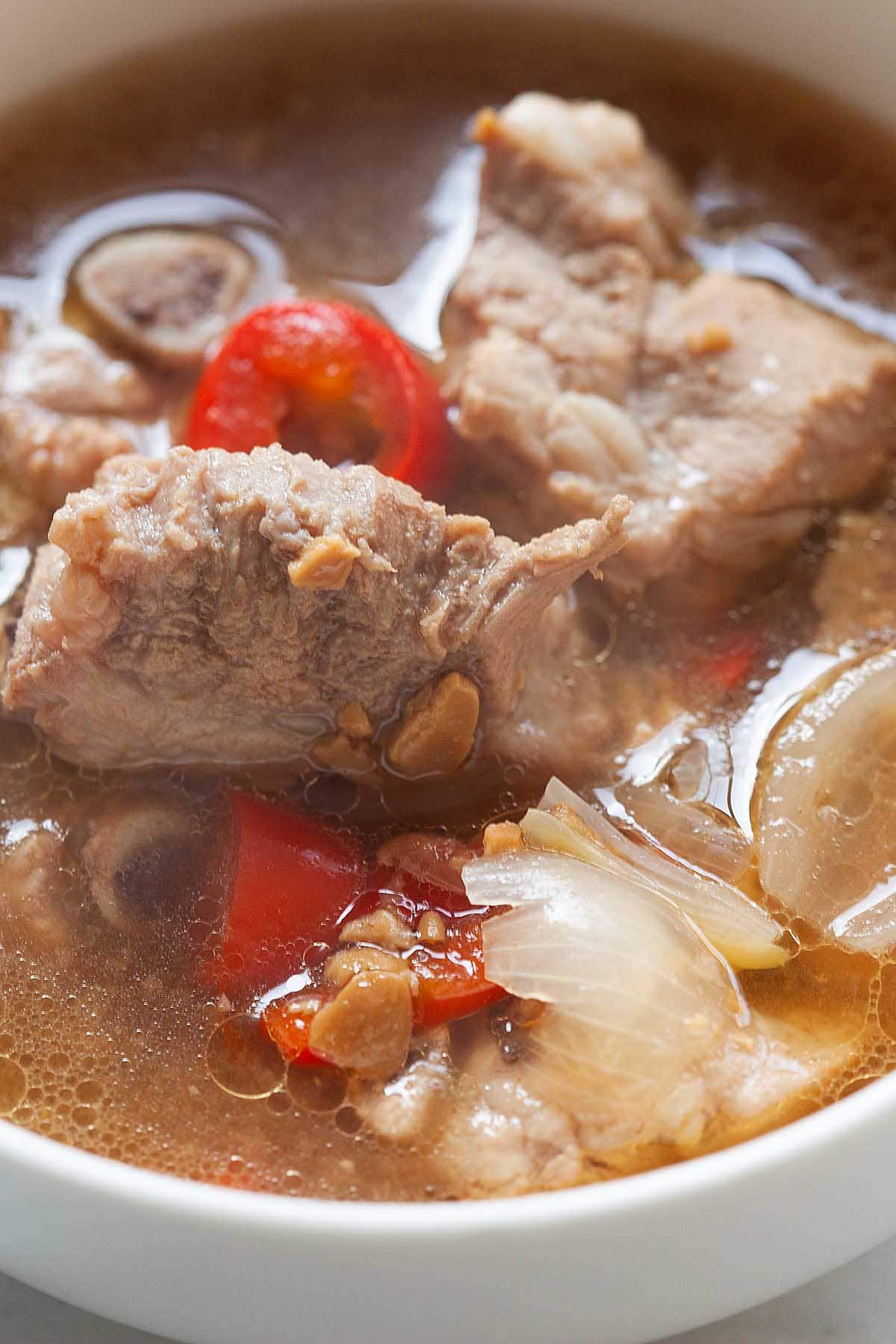
Nyonya loves pork and there are many dishes that are made of pork, and this stewed pork ribs dish is one of them. One of the very common ingredients used by Penang Nyonya is bean paste or taucheo; it’s an ingredient that I can’t do without.
In Penang hokkien dialect, we refer “stewing” as “khong,” so locally, stewed pork ribs is called “Khong Bak Kut” (Bak Kut means pork ribs).
There are other flavorful and mouthwatering stew dishes such as tau eu bak (pork with soy sauce), khong assam, etc, which I plan to share with you over time.
This stewed pork ribs is best served with steamed rice and eat with sambal belacan.
A Nyonya meal is incomplete without sambal belacan.
How To Make Nyonya Stewed Pork Ribs
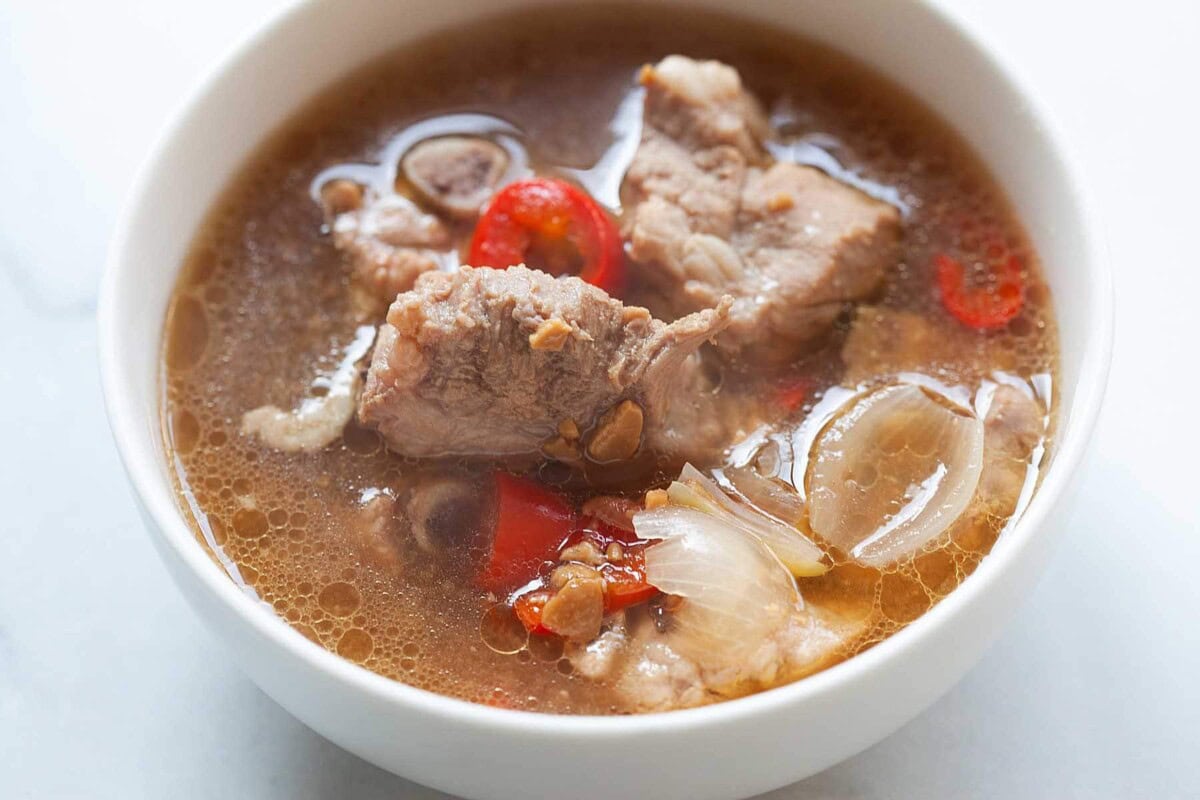
Grab a stew pot, add about 4 cups of water, and bring it to a boil. Super easy!
Once the water’s boiling, toss in the shallots, chilies, and pork ribs.
Next, stir in the taucheo (bean paste) and bring everything back to a boil. Let those flavors come together.
Turn the heat down to medium or low, cover it up with a lid, and let the ribs stew gently for about an hour, or until they’re nice and tender.
Now, toss in the tamarind juice, a little sugar, and salt to taste. Give it a good stir and adjust the flavors to your liking.
If it’s not sour enough for your taste, just mix a bit more water into the tamarind pulp and squeeze out some extra juice. That should do the trick!
Frequently Asked Questions
This recipe is only 380 calories per serving.

What To Serve With Nyonya Stewed Pork Ribs
For a wholesome meal and easy weeknight dinner, I recommend the following recipes.
I hope you enjoy this post as much as I do. If you try my recipe, please leave a comment and consider giving it a 5-star rating. For more easy and delicious recipes, explore my Recipe Index, and stay updated by subscribing to my newsletter and following me on Facebook, Pinterest, and Instagram for new updates.
Other Recipes You Might Like
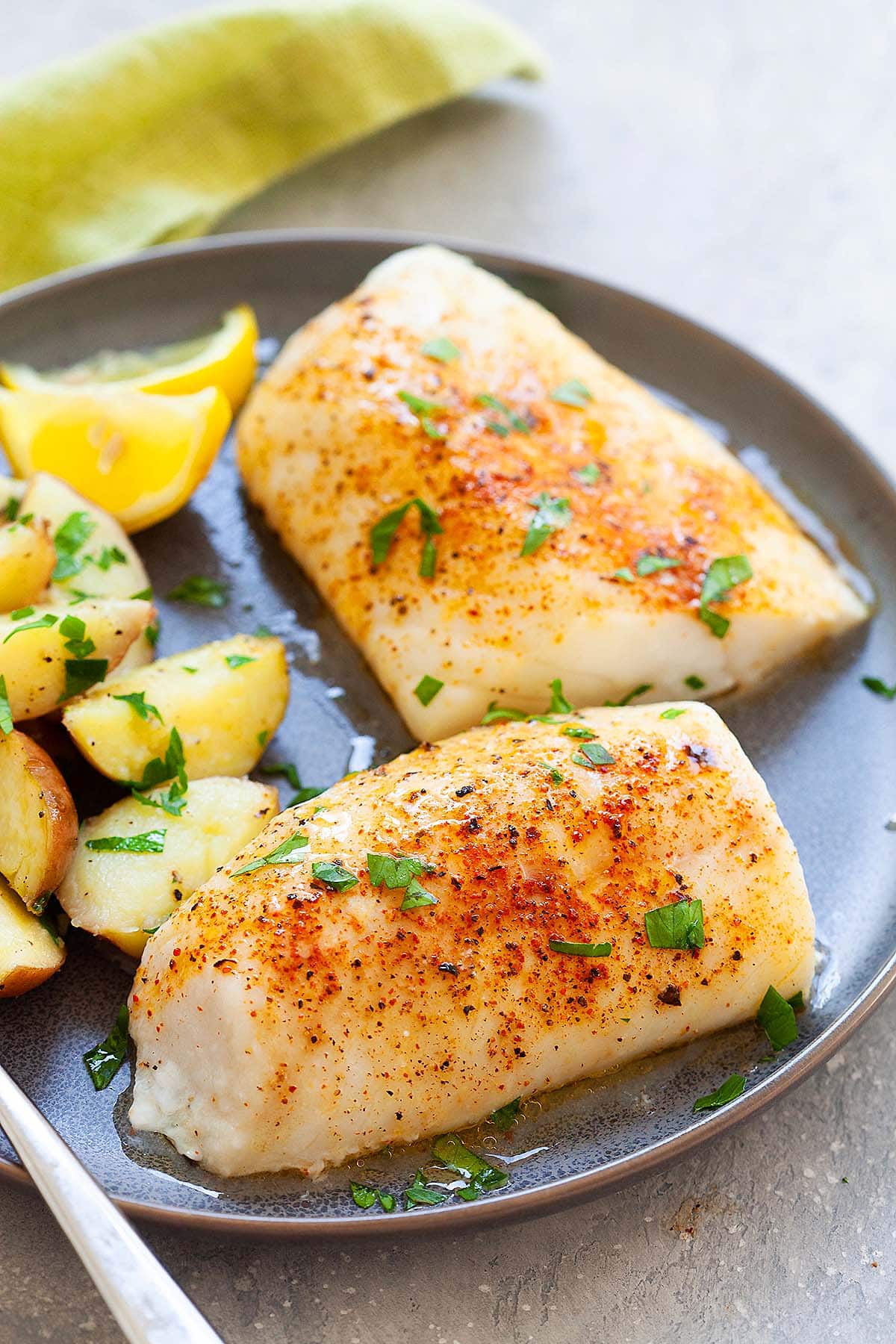
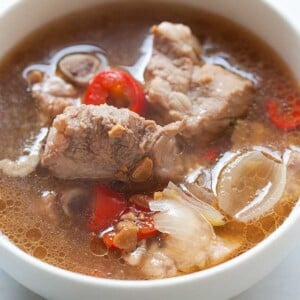
Nyonya Stewed Pork Ribs
Ingredients
- 450 g (16 oz) pork spare ribs
- 100 g (3½ oz) shallots, skin peeled
- 100 g (3½ oz) fresh red chilies, seeded and sliced lengthwise
- 4 cups water
- 3 tablespoons taucheo, bean paste, smashed with a mortar and pestle
- 1 tablespoon tamarind pulp, soaked in 1/4 cup water, extract the juice
- 1 1/2 teaspoons sugar , or to taste
- salt to taste
Instructions
- Heat a stew pot with 4 cups of water and bring it to a boil.
- Add the shallots, chilies, and pork ribs to the boiling water.
- Add taucheo (bean paste) and bring the mixture to a boil.
- Lower the heat to medium or low, cover with a lid, and slowly stew the ribs for about 1 hour, or until the meat is tender.
- Add tamarind juice, sugar, and salt to taste.
- If it's not sour enough, add more water to the tamarind pulp and extract additional juice.
Notes
Nutrition
Nutrition information is automatically calculated, so should only be used as an approximation.
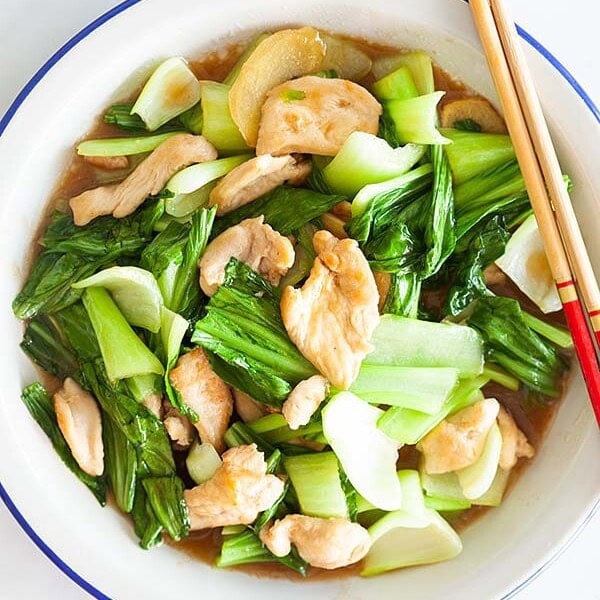
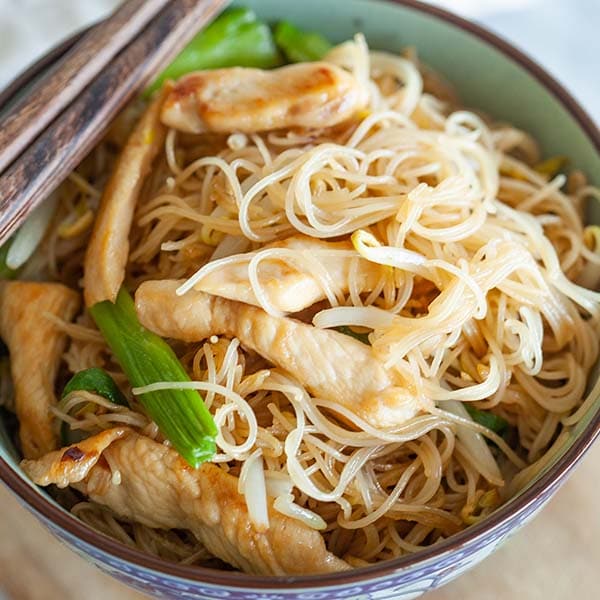
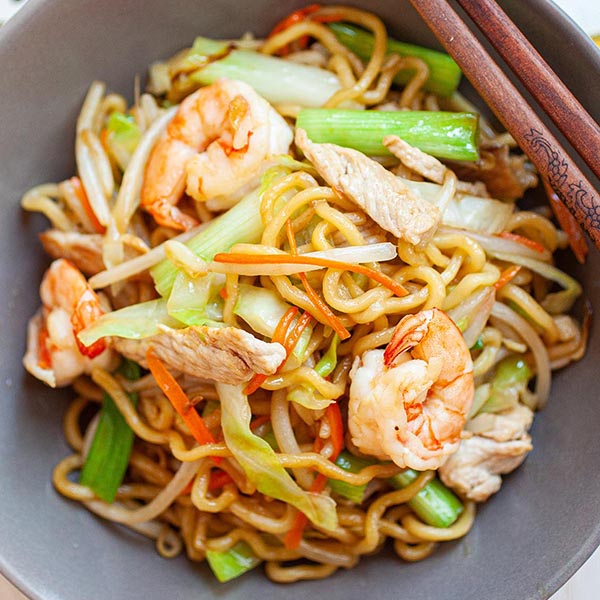
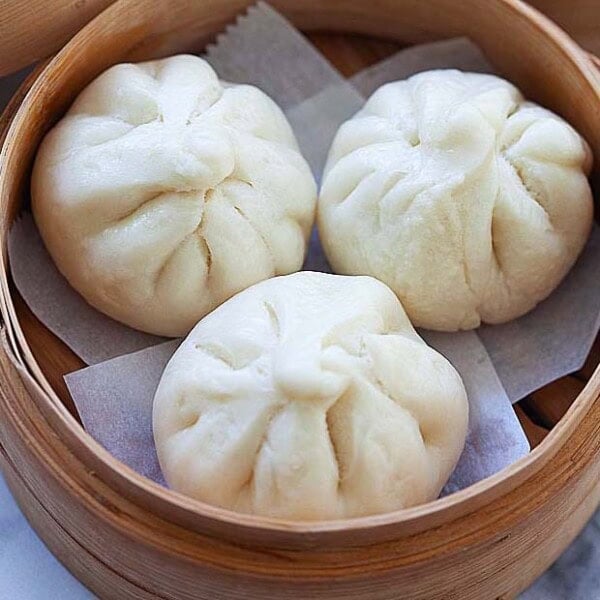






Thanks for sharing the recipe!. This is so appetising with steam rice and that sambal belachan!. Love it!
Hi Donna. Thank you for your lovely comment. I’m so glad you liked the recipe.
Hi Bee, is this called Bai Kut Sui (sour in Hokkien) as well? I’ve been hearing the name of the dish from my grandma but have never tried, the dish you made definitely resembles it ?
Hi Bee, Is there a particular brand of taucheo/bean paste you use. Would you buy it from somewhere like Ranch 99 and is it in a jar? I really miss Penang and the food so I can’t wait to try some of your Nyonya dishes. thanks for wonderful recipes.
It doesn’t matter.
Delicous. I will make it often.
Thanks for the recipe.
Laslo
Dear Bee,
I made this delicous dish yesterday. It is simple to prepare and it has a wonderful taste. I will certainly make this more often. One question remains though. What is the right way to eat this dish? Since this stew comes with a very abundant and really delicious ‘broth’, should I eat it like a rich soup in a soup bowl? Or do you ladle it over white rice on a plate/bowl? Forgive me for my ignorance.
Fred
Eat with steamed rice and ladle the soup on the rice, slurp and eat. :)
Would frying the minced shallots with tau cheo enhance the flavour ?
Yes!
Is there an alternative for the taucheo and tamarind juice?
No.
I tried this dish yesterday, and my fussy eaters loved it. Unbelievably easy dish. Thanks so much.
The bean paste you mentioned in the recipe are which type? As I am confused with the 2 type – brown and black. Some are in bean form some are in smashed type , for this dish which one should I use? Or any particular brand you would recommend?
Brown bean, smashed